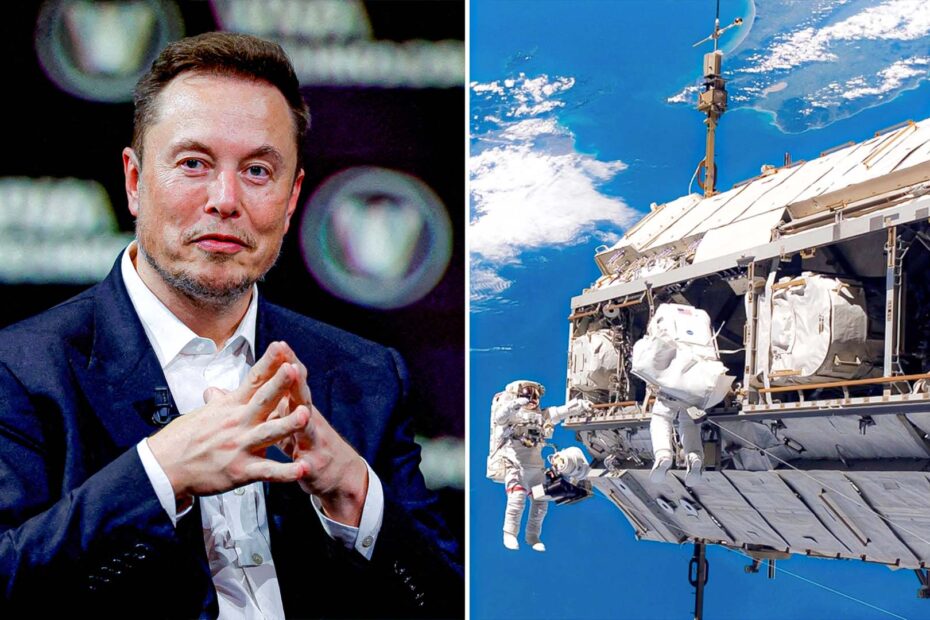In the realm of space exploration, collaboration between government agencies and private companies has become increasingly common. One such prominent partnership is between NASA, the United States’ premier space agency, and SpaceX, the trailblazing private aerospace manufacturer and space transportation company founded by Elon Musk.
This partnership has facilitated numerous missions, each pushing the boundaries of space exploration further. One of the most significant upcoming endeavors is the joint launch of four astronauts to the International Space Station (ISS). This mission marks another milestone in humanity’s quest to expand its presence in space, further cementing the role of public-private partnerships in space exploration.
The Evolution of Space Exploration Partnerships:
Space exploration has historically been dominated by government-funded agencies such as NASA, Roscosmos (Russia), ESA (European Space Agency), and others. However, with advancements in technology and the emergence of ambitious private enterprises like SpaceX, the landscape of space exploration has undergone a significant transformation. This evolution has led to increased collaboration between governmental space agencies and private companies, bringing together diverse expertise, resources, and innovation.
NASA’s Collaboration with SpaceX:
NASA’s collaboration with SpaceX exemplifies the successful integration of government and private sector efforts in space exploration. Through initiatives like the Commercial Crew Program, NASA has leveraged SpaceX’s cutting-edge technology and cost-effective approach to space transportation. This collaboration has enabled NASA to focus its resources on scientific research and exploration while outsourcing transportation to low Earth orbit (LEO) missions to private partners like SpaceX.
SpaceX’s Role in Advancing Space Transportation:
Founded in 2002, SpaceX has rapidly emerged as a frontrunner in the space industry, achieving numerous milestones that were once deemed impossible. Central to SpaceX’s success is its reusable rocket technology, exemplified by the Falcon 9 rocket and the Dragon spacecraft. Reusability significantly reduces the cost of space missions, making space more accessible and economically viable. SpaceX’s ability to land and refurbish rocket stages has revolutionized space transportation, laying the groundwork for ambitious missions like crewed flights to the ISS.
The Significance of the International Space Station:
The International Space Station serves as a symbol of international cooperation in space exploration. A collaborative effort involving multiple countries, including the United States, Russia, Europe, Japan, and Canada, the ISS represents humanity’s continuous presence in space for over two decades. It serves as a laboratory for scientific research, technological innovation, and international diplomacy. Crewed missions to the ISS not only advance scientific knowledge but also foster international collaboration and goodwill.
Mission Overview: Launching Four Astronauts to the ISS
The upcoming joint mission between NASA and SpaceX aims to launch four astronauts to the International Space Station. This mission, designated Crew-5, represents the latest chapter in the ongoing partnership between the two entities. The crew members, comprising both NASA astronauts and international partners, will embark on a journey aboard SpaceX’s Crew Dragon spacecraft, propelled by the Falcon 9 rocket.
Preparation and Training:
Preparing for a mission to the ISS requires rigorous training and preparation. Astronauts undergo extensive training on spacecraft systems, spacewalk procedures, scientific experiments, and emergency protocols. SpaceX collaborates closely with NASA to ensure that astronauts are proficient in operating Crew Dragon and are prepared for the challenges of space travel. Training simulations, mock missions, and real-time feedback are integral to ensuring the safety and success of the mission.
Mission Objectives:
The primary objectives of the Crew-5 mission include:
- Transportation of astronauts to the ISS: The Crew Dragon spacecraft will ferry the astronauts to the ISS, where they will join the existing crew members aboard the station.
- Scientific research: Once aboard the ISS, the astronauts will conduct a series of experiments spanning various scientific disciplines, including biology, physics, and materials science. These experiments aim to advance our understanding of space physiology, microgravity effects, and technological innovation.
- Maintenance and operations: Crew members will assist in the maintenance and operation of the ISS, ensuring the continued functionality of critical systems and infrastructure.
- Technology demonstration: The mission will also serve as a platform for testing new technologies and systems in the space environment, paving the way for future exploration missions.
Challenges and Considerations:
Despite significant advancements in space technology, space travel remains inherently risky and challenging. Astronauts face numerous physical and psychological challenges during their time in space, including exposure to microgravity, radiation, and isolation. Additionally, the complex nature of space missions requires meticulous planning and coordination to mitigate potential risks and ensure the safety of the crew.
